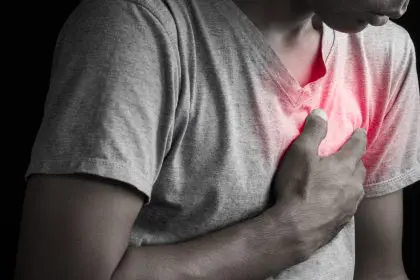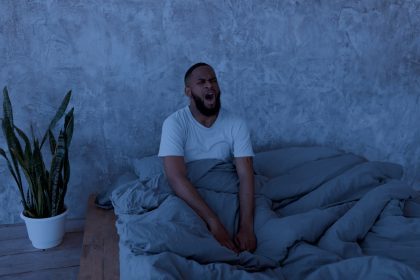A panic attack feels like an ambush—your heart races, breathing becomes erratic, and a wave of dread washes over you. But while the symptoms are real, the danger is not. Panic attacks occur when the brain’s threat detection system misfires, triggering the body’s fight-or-flight response even when no actual danger exists.
The body releases a surge of adrenaline, increasing heart rate and causing physical symptoms like dizziness, sweating, and nausea. At the same time, the mind races with catastrophic thoughts, fueling the sensation of being trapped in an uncontrollable cycle of fear. Understanding that these reactions stem from a biological response—not an actual crisis—can be the first step toward managing them.
How the physical symptoms take over
One of the most noticeable effects of a panic attack is rapid, shallow breathing. This hyperventilation decreases carbon dioxide levels in the blood, leading to dizziness, tingling in the hands and feet, and a feeling of unreality. The more you try to control your breathing without proper technique, the worse these symptoms can become.
Controlled breathing exercises, such as diaphragmatic breathing, help counteract hyperventilation. Slowly inhaling through the nose, holding for a few seconds, and exhaling through the mouth can restore balance and reduce symptoms. Recognizing that breath control is within your power provides an anchor during an episode.
Dehydration can make symptoms worse
Hydration plays a surprisingly important role in panic attack management. When the body is dehydrated, blood pressure fluctuations and electrolyte imbalances can contribute to dizziness, heart palpitations, and heightened anxiety. A dry mouth—a common symptom during an attack—can also be exacerbated by dehydration, making it feel even harder to breathe.
Drinking small sips of water during or after an attack can help rehydrate the body and signal to the nervous system that the emergency is over. While hydration alone won’t stop a panic attack, it is a simple yet effective tool to minimize symptoms.
The psychological side of panic attacks
The physical sensations of a panic attack often trigger a secondary fear response: the fear of having another attack. This fear can lead to avoidance behaviors, where individuals begin to avoid situations, places, or even thoughts that they associate with past episodes. Unfortunately, this pattern reinforces anxiety, making future attacks more likely.
Cognitive behavioral techniques help break this cycle by challenging catastrophic thoughts. Instead of fearing an attack, reframing the experience as a temporary and manageable response can reduce overall anxiety. Recognizing panic attacks as uncomfortable but not dangerous is a critical step in gaining control.
Grounding techniques can interrupt spiraling thoughts
Sensory-based grounding techniques help shift focus away from panic symptoms and back to the present moment. Simple actions—like holding a cold object, running hands under water, or describing surroundings in detail—can interrupt the escalating cycle of fear.
Aromatherapy, particularly scents like lavender or peppermint, can also engage the senses and provide a calming effect. Similarly, listening to familiar, soothing sounds or practicing mindfulness can help redirect attention away from the attack.
Long-term strategies for panic attack management
Regular physical activity is one of the most effective ways to reduce panic attacks over time. Exercise helps regulate adrenaline levels, improve breathing control, and release endorphins, which counteract anxiety. Activities like yoga, swimming, and walking provide both physical and mental benefits by reducing baseline stress levels.
Establishing a consistent daily routine also creates a sense of stability. Predictable sleep patterns, balanced nutrition, and regular self-care habits help keep the nervous system in check, reducing the likelihood of unexpected panic episodes.
Seeking support makes a difference
Professional help, whether through therapy or medical intervention, can provide valuable tools for managing panic disorder. Cognitive behavioral therapy (CBT) is one of the most effective treatments, helping individuals reframe anxious thoughts and gradually expose themselves to feared situations.
Medication, such as selective serotonin reuptake inhibitors (SSRIs) or beta-blockers, can also be prescribed for those experiencing frequent or debilitating attacks. While not a standalone solution, medication can serve as a temporary aid while developing long-term coping strategies.
Taking control of panic attacks
Understanding panic attacks as a physiological response—not a sign of weakness or impending doom—can be life-changing. By learning to manage breathing, staying hydrated, grounding oneself in the moment, and addressing long-term anxiety triggers, individuals can significantly reduce both the frequency and intensity of attacks.
With the right tools and strategies, panic attacks don’t have to control daily life. Science-backed techniques provide a clear path to regaining a sense of stability, proving that relief is not only possible but entirely achievable.














